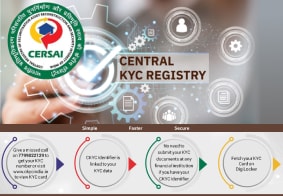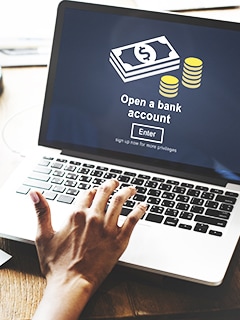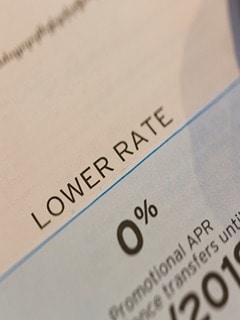CKYC Registry
-
Customer Service Contact us Service request Locate a branch
Find all the help you need
Scan the QR, get our app, and find help on your fingertips

Help CenterSupport topics, Contact us, FAQs and more
-
Login
Are you ready for an upgrade?
Login to the new experience with best features and services
-
Login
Are you ready for an upgrade?
Login to the new experience with best features and services
- Accounts
-
Deposits
IDFC FIRST Bank Deposits
View all Deposits -
Loans
IDFC FIRST Bank Loans
View all Loans - Wealth & Insure
-
Payments
IDFC FIRST Bank Payments
View all Payments -
Cards
IDFC FIRST Bank Cards
View all Cards - Blogs
- Corporate Account
-
Cash Management Services
IDFC FIRST Bank Cash Management Services
View all Cash Management Services - Supply Chain Finance
-
Corporate Lending
IDFC FIRST Bank Lending
View all -
Treasury
IDFC FIRST Bank Treasury
See more details - NBFC Financing
Support topics, Contact us, FAQs and more
- IDFC FIRST Bank Accounts
-
Savings Account
-
Corporate Salary
Account -
Senior Citizens
Savings Account -
First Power
Account -
Current Account
-
NRI Savings
Account -
TASC Institutional
Account -
Savings Account
Interest Calculator
- IDFC FIRST Bank Deposits
-
Fixed Deposit
-
Recurring Deposit
-
NRI Fixed Deposit
-
Safe Deposit Locker
-
FD Calculator
-
RD Calculator
- IDFC FIRST Bank Loans
-
Personal Loan
-
Consumer Durable
Loan -
Home Loan
-
Business Loan
-
Professional Loan
-
Education Loan
-
New Car Loan
-
Pre-owned Car Loan
-
Two Wheeler Loan
-
Pre-owned Two
Wheeler Loan -
Commercial Vehicle
Loan -
Gold Loan
-
Loan Against Property
-
Loan Against Securities
-
Easy Buy EMI card
-
Personal Loan
EMI Calculator -
Education Loan
EMI Calculator -
Home Loan
EMI Calculator
- IDFC FIRST Bank Wealth & Insure
-
FIRST Select
-
FIRST Wealth
-
FIRST Private
-
Mutual Funds
-
Sovereign Gold Bond
-
Demat Account
-
Term Insurance
-
Life Insurance
-
Health Insurance
-
General Insurance
-
Bonds
-
Loan Against
Securities -
Portfolio Management
Service
- IDFC FIRST Bank Payments
-
FASTag
-
Credit Card
Bill Payments -
UPI
-
Funds Transfer
-
Forex Services
-
Pay Loan EMI
- IDFC FIRST Bank Cards
-
Ashva :
Metal Credit Card -
Mayura :
Metal Credit Card -
FIRST Millennia
Credit Card -
FIRST Classic
Credit Card -
FIRST Select
Credit Card -
FIRST Wealth
Credit Card -
FIRST WOW!
Credit Card -
Deals
-
Debit Cards
-
Co-branded Cards
-
Credit Card
EMI Calculator -
FIRST Corporate
Credit Card -
FIRST Purchase
Credit Card -
FIRST Business
Credit Card
- Premium Metal Credit Cards
-
AshvaLifestyle1% Forex₹2,999
-
MayuraLifestyleZero Forex₹5,999
-
FIRST PrivateInvite Only
- Best for travellers
-
MayuraZero ForexMetal₹5,999
-
Ashva1% ForexMetal₹2,999
-
FIRST WOW!Zero ForexTravelLifetime Free
-
FIRST SWYPTravel OffersEMI₹499
-
FIRST Select1.99% ForexLifestyleLifetime Free
-
FIRST Wealth1.5% ForexLifestyleLifetime Free
-
Club VistaraTravelLifestyle₹4,999
-
IndiGo IDFC FIRST Dual Credit CardTravelLifestyle₹4,999
- Max benefits, Free for life
-
FIRST Classic10X RewardsShoppingNever Expiring Rewards
-
FIRST Millennia10X RewardsShoppingNever Expiring Rewards
-
FIRST Select10X RewardsLifestyle1.99% Forex
-
FIRST Wealth10X RewardsLifestyle1.5% Forex
-
FIRST WOW!RewardsTravelZero Forex
-
LIC ClassicRewardsInsuranceShopping
-
LIC SelectRewardsInsuranceShopping
- Reward Multipliers
-
AshvaLifestyleMetal₹2,999
-
MayuraLifestyleZero Forex₹5,999
-
FIRST ClassicNever Expiring RewardsShoppingLifetime Free
-
FIRST MillenniaNever Expiring RewardsShoppingLifetime Free
-
FIRST SelectNever Expiring RewardsLifestyleLifetime Free
-
FIRST WealthNever Expiring RewardsLifestyleLifetime Free
- Rewards & Credit on UPI
-
FIRST Power+FuelUPI₹499
-
FIRST PowerFuelUPI₹199
-
FIRST EA₹NVirtual1% Cashback₹499
-
FIRST DigitalVirtualUPI₹199
-
IndiGo IDFC FIRST Dual Credit CardUPITravelDual cards
- Fuel and Savings
-
FIRST PowerRewardsUPI₹199
-
FIRST Power+RewardsUPI₹499
-
LIC ClassicRewardsInsuranceShopping
-
LIC SelectRewardsInsuranceShopping
- Express and Flaunt
-
AshvaMetal1% Forex₹2,999
-
MayuraMetalZero Forex₹5,999
-
FIRST SWYPEMIOfferMAX₹499
-
FIRST MillenniaRewardsShoppingLifetime Free
- FD Backed rewarding Credit Cards for all
-
FIRST EA₹NVirtualCashback₹499
-
FIRST WOW!Zero ForexTravelLifetime Free
-
CreditPro Balance TransferTransfer & SaveReduce InterestPay Smartly
- IDFC FIRST Bank NRI Forex Solutions
-
Send money to India-Wire transfer
-
Send money to India-Digitally
-
Send money abroad
-
Max Returns FD (INR)
- IDFC FIRST Bank MSME Accounts
-
Platinum Current
Account -
Gold
Current Account -
Silver Plus
Current Account -
Merchant Multiplier
Account -
Agri Multiplier
Account -
TASC Institutional
Account -
Dynamic Current
Account -
World business
Account -
First Startup
Current Account
- IDFC FIRST Bank Business Loans
-
Business Loan
-
Professional Loan
-
Loan Against Property
-
Business Loan for Women
-
Working Capital Loan
-
Construction Equipment Loan
-
Machinery Loan
-
Healthcare Equipment Loan
- IDFC FIRST Bank Business Solutions
-
Payment Solutions
-
Tax Payments
-
Doorstep Banking
-
Point of Sale (POS)
-
Escrow Accounts
-
NACH
-
Payment Gateway
-
UPI
-
Virtual Accounts
-
As per amendment in the Income Tax Rules, PAN or Aadhaar are to be mandatorily quoted for cash deposit or withdrawal aggregating to Rupees twenty lakhs or more in a FY. Please update your PAN or Aadhaar. Kindly reach out to the Bank’s contact center on 1800 10 888 or visit the nearest IDFC FIRST Bank branch for further queries.
-
-
Most Searched
Sorry!
We couldn’t find ‘’ in our website
Here is what you can do :
- Try checking the spelling and search
- Search from below suggestions instead
- Widen your search & try a more generic keyword
Suggested
Get a Credit Card
Enjoy Zero Charges on All Commonly Used Savings Account Services
Open Account Now
Personal Loan
Top-up loan or a new personal loan: Which should you choose?
Key Takeaways
A top-up loan is an economical choice for existing customers looking for more funds.
A new personal loan may be more suitable if you need a higher amount or flexible repayment terms.
Carefully evaluate loan terms before choosing between a personal loan and a top-up loan.
A FIRSTmoney personal loan offers fast approvals, flexible tenures, and competitive interest rates.
When a borrower needs funds in an emergency while having an active loan already, they may consider a top-up loan on the existing personal loan or a new personal loan. Both are beneficial in their own ways, and the best decision would be based on the loan terms, interest rate, and repayment capacity. Let’s explore both these options and find out which one is suitable for you.
READ MORE
What is a top-up loan?
A personal loan top-up loan is a facility in which the borrowers are provided with funds over and above the current personal loan. Financial institutions typically offer it if the borrower has a good payment history. Here is what happens when a borrower opts for a top-up personal loan:
- The payment record of the borrower will be checked by the lender prior to the top-up loan being extended.
- The additional amount is taken as an addition to the current loan.
- Since it's linked to an existing loan, it often carries a similar or lower interest rate.
- The repayment tenure may be stretched out, or the repayment cycle may be adjusted appropriately.
Advantages of top-up vs new personal loans
Top-up loans offer convenience to borrowers looking for additional funds to meet their extra expenses. However, there are several other reasons why top-up loans are a common preference, such as:
- A fresh application may lead to higher interest rates due to an already running loan. A top-up loan, on the other hand, helps borrowers get the same interest rate as the existing loan.
- A top-up loan usually requires lesser documentation since the borrower already has an existing loan with the lender. While in the case of a fresh loan, the applicant needs to begin the process from scratch, extending the documentation and approval process.
- Faster processing and quick disbursal since the lender already has the borrower’s details.
Drawbacks of a top-up loan
Despite several advantages, a top-up loan comes with a few drawbacks like:
- Only existing borrowers with a good repayment history can avail top-up loans, restricting new applicants.
- Adding a top-up loan increases the total outstanding amount, leading to higher EMIs or an extended repayment period.
What is a fresh personal loan?
A new personal loan is a standalone loan, not linked with any existing account. It entails a new application, processing, and evaluation by the lender.
- The borrower submits a new application, and the lender assesses their income, credit score, and finances.
- The borrower is sanctioned a lump sum along with fresh repayment terms and dates.
Benefits of a new personal loan
Here are certain benefits of opting for a fresh personal loan:
- Higher loan amounts depend on eligibility in contrast to the present loan amount.
- Increased freedom of choice for lender, tenure, and rate of interest.
- Separate repayment schedule independent of other loans.
Drawbacks of a new personal loan
Fresh personal loans might come with certain drawbacks:
- Increased documentation like proof of income and KYC details.
- Interest rates will be slightly higher than in the case of a top-up loan.
- Managing multiple EMIs can strain your monthly budget and complicate repayment.
Top-up loan vs. new personal loan: Which loan should you choose?
If you are struggling to decide which type of loan to go for, here’s a quick comparison to help you decide.
Criteria |
Top-up loan |
New personal loan |
Loan amount |
Limited to the existing loan |
Higher, based on eligibility |
Interest rate |
Lower, as you are an existing borrower |
Varies based on credit score |
Processing time |
Quick, minimal documentation |
Standard approval time |
Repayment structure |
Linked to the original loan |
Independent loan tenure |
Eligibility |
Only available to existing borrowers |
Open to all eligible applicants |
Compare your needs, weigh the advantages and disadvantages and opt for a loan according to your repayment ability.
Why choose FIRSTmoney for your loan requirements?
FIRSTmoney personal loans from IDFC FIRST Bank combine flexibility, fast disbursal, and low interest rates and the facility to avail multiple on demand loans around the clock.:
- Zero foreclosure fees, enabling borrowers to close their loans any time without additional fee.
- Loan amount of up to ₹10 lakhs for every financial need.
- Greater flexibility in getting additional funds to meet urgent financial needs with just a few clicks.
- Interest rates on personal loan starts at just 9.99% p.a., making it affordable.
- Tenure is flexible, ranging from 9 to 60 months.
- Quick and easy approval with minimal paperwork as it is a 100% digital loan.
Conclusion
If you need a higher amount or greater repayment flexibility, a new personal loan would be the best option.
If you already have an existing personal loan and need additional funds, a top-up loan will be a convenient option given the reduced interest rates and faster processing. Apply now for a FIRSTmoney loan in minutes!
Note: Interest rates may vary based on credit profile and lender policies
Frequently Asked Questions
What’s the difference between a top-up loan and a new personal loan?
A top-up loan adds extra funds to an existing personal loan with the same lender. It keeps your loan relationship intact and usually adjusts the EMI or tenure to reflect the new borrowing. Paperwork is often lighter since your KYC and checks exist. A new personal loan starts afresh as a separate account, with its own tenure, rate, fees and EMI, and may be taken from any eligible lender.
Which option is cheaper – top-up loan or fresh personal loan?
Neither option is automatically cheaper. Compare the all in cost for both. Look at APR, processing fees, convenience charges, insurance add-ons, and any foreclosure or part-prepayment penalties. Consider your remaining tenure and whether a fresh loan at a lower rate offsets the fees for a new loan. If you plan to prepay early, lower penalties matter. Compare total interest plus fees over your expected holding period using a simple calculator before deciding.
How do I apply for a top-up loan at IDFC FIRST Bank?
You can get multiple on-demand loans with FIRSTmoney by IDFC FIRST Bank. Open the IDFC FIRST Bank app. Tap on the Loans icon at the bottom of the app. Click on the FIRSTmoney card and then on Avail Loan. Select your loan options – amount, EMI plan and EMI date. Review your offer details and bank account information. Confirm with OTP to get disbursal in your linked bank account.
Alternatively, you can simply click on Instant Cash icon on the home page to avail multiple on-demand loans.
Can I get a top-up loan without closing my existing one?
Yes. A top-up is typically sanctioned on an existing personal loan, so the original account continues. The lender may either revise the EMI on the same loan or create a linked tranche with a separate EMI. Disbursement is to your account after documentation. Review revised repayment schedules, interest costs, fees and any changes to mandates. Ensure the combined obligation fits your budget and does not strain monthly cash flow.
Which loan gets approved faster - top-up or fresh personal loan?
Top-ups are often processed faster because the lender already holds your KYC, repayment history and salary or income details, so only incremental checks are needed. That said, timelines still depend on internal policies, system queues, additional documents requested and your repayment track. Fresh personal loans require full underwriting, so they can take longer. To save time, keep statements, payslips and KYC handy and respond quickly to any information requests.
How does each option affect my credit score?
Both a top-up and a new personal loan usually trigger hard enquiries and increase outstanding debt, which can cause a short-term dip in your credit score. The effect tends to ease as you pay EMIs on time and keep utilisation and balances under control. Avoid applying with many lenders at once. Maintain low misses or delays, monitor your credit report for errors, and build a predictable repayment history.
Disclaimer
The contents of this article/infographic/picture/video are meant solely for information purposes. The contents are generic in nature and for informational purposes only. It is not a substitute for specific advice in your own circumstances. The information is subject to updation, completion, revision, verification and amendment and the same may change materially. The information is not intended for distribution or use by any person in any jurisdiction where such distribution or use would be contrary to law or regulation or would subject IDFC FIRST Bank or its affiliates to any licensing or registration requirements. IDFC FIRST Bank shall not be responsible for any direct/indirect loss or liability incurred by the reader for taking any financial decisions based on the contents and information mentioned. Please consult your financial advisor before making any financial decision.
The features, benefits and offers mentioned in the article are applicable as on the day of publication of this blog and is subject to change without notice. The contents herein are also subject to other product specific terms and conditions and any third party terms and conditions, as applicable. Please refer our website www.idfcfirstbank.com for latest updates.























